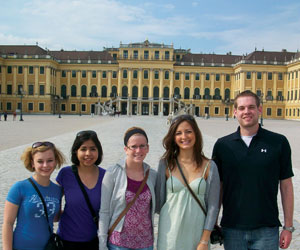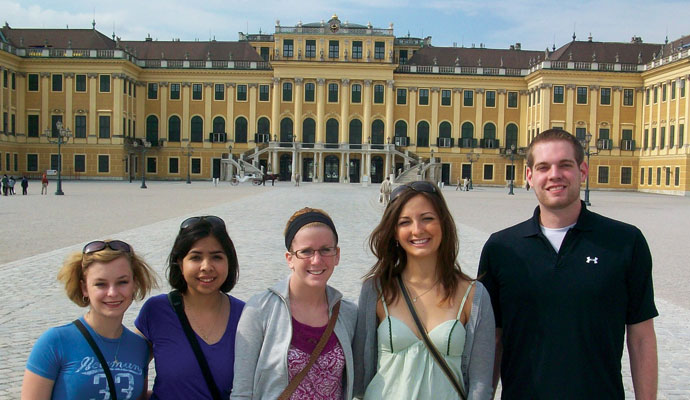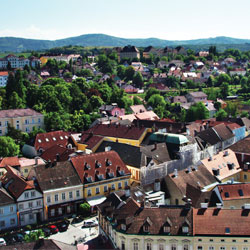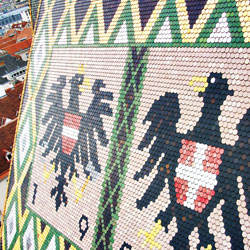
Trip takes students from empires to totalitarian regimes and back

L-r: Students Meghan Jost, Adelita Aldava, Randyn Wertz, Megan Lowe, and Jacob Somes at the Schonbrun Palace in Vienna.
This summer five Newman students learned about the elegance and breadth of what was the Austro-Hungarian Empire, as well as the oppression and horror of former Nazi and communist regimes, as participants in “Europe by Rail,” a three-week tour of western and eastern Europe led by Associate Professor of History Kelly McFall, Ph.D.
The trip began in Vienna, Austria, and progressed through Hungary, the Czech Republic, eastern Germany, and the Netherlands before concluding in London. In addition to helping students understand the history and culture of Europe in the 20th and 21st centuries, McFall said the trip was designed to show students the ways different cultures interact.



“The route I chose was very intentional,” he said. “I wanted to hit cities on both sides of what had been the Iron Curtain to show students the contrasts, as well as the similarities.”
McFall noted how the long-term influence of the Habsburgs could be seen in the art and architecture of Austria, the Czech Republic and Hungary. The students noticed it too, although they were equally struck by the evidence of communism and the fight for freedom of people in eastern Europe, as documented in Prague’s Museum of Communism.
“I think it has helped my understanding of the countries that we have visited and why they are the way they are,” wrote Meghan Jost, who along with McFall and fellow student Megan Lowe kept a blog during the trip. “I also found it interesting to look at footage of the riots that happened in the late eighties right before the fall of Communism. It made it all more real to me to be able to see pictures of events that happened around the time I was born and made me realize that for countries like the Czech Republic and Hungary democracy is a fairly new concept.”
McFall said students were also moved by the Buchenwald concentration camp in Weimar, Germany, and the Jewish Museum in Prague. At a lunch stop following the museum visit, the students were full of questions.
“I had planned several things to do after lunch, but the students kept asking me about Jewish history,” he said. “That happens a lot – the students drive the learning. I just have a conversation with them.”
McFall, who lived in Vienna and has traveled extensively in Europe, noted that while many things about the continent will always be the same, some aspects have changed since his last visit in 2000.
“The differences between eastern and western Europe are going away,” he said. “In a subway station in Budapest, there is a large map of the city that shows the location of 25 McDonald’s. You would not have seen that 10 years ago. London and Amsterdam didn’t change, but the east did.”
The students did as well. McFall said one of his goals was to show students that they can learn how to manage a different culture on their own.
“It’s a real personal growth experience learning that you can navigate an unfamiliar city by yourself,” he said. “To me those kinds of things are what Newman is about – helping people understand their world so they can transform it. Traveling overseas makes the students different people.”
The students agree.
“One of the things I learned from this trip was simply how big this world really is,” Lowe said. “Billions of people inhabit this earth and have lives so different from our American ones. I don’t believe you have truly lived until you have been to a different continent.”
Tags: American, Amsterdam, Austria, Austro-Hungarian Empire, Buchenwald, Budapest, Czech Republic, Europe, Germany, Habsburgs, Hungary, Jewish Museum, Kelly McFall, London, McDonalds, Megan Lowe, Meghan Jost, Nazi, Netherlands, Prague, Prague's Museum of Communism, Vienna, Weimar
